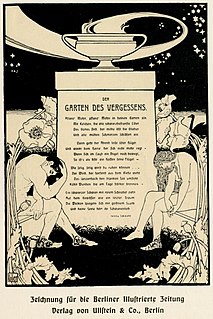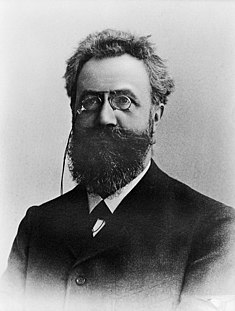Related Research Articles

Forgetting or disremembering is the apparent loss or modification of information already encoded and stored in an individual's short or long-term memory. It is a spontaneous or gradual process in which old memories are unable to be recalled from memory storage. Problems with remembering, learning and retaining new information are a few of the most common complaints of older adults. Studies show that retention improves with increased rehearsal. This improvement occurs because rehearsal helps to transfer information into long-term memory.

The forgetting curve hypothesizes the decline of memory retention in time. This curve shows how information is lost over time when there is no attempt to retain it. A related concept is the strength of memory that refers to the durability that memory traces in the brain. The stronger the memory, the longer period of time that a person is able to recall it. A typical graph of the forgetting curve purports to show that humans tend to halve their memory of newly learned knowledge in a matter of days or weeks unless they consciously review the learned material.

Hermann Ebbinghaus was a German psychologist who pioneered the experimental study of memory, and is known for his discovery of the forgetting curve and the spacing effect. He was also the first person to describe the learning curve. He was the father of the neo-Kantian philosopher Julius Ebbinghaus.
Categorization is the human ability and activity of recognizing shared features or similarities between the elements of the experience of the world, organizing and classifying experience by associating them to a more abstract group, on the basis of their traits, features, similarities or other criteria. Categorization is considered one of the most fundamental cognitive abilities, and as such it is studied particularly by psychology and cognitive linguistics.

Cognition refers to "the mental action or process of acquiring knowledge and understanding through thought, experience, and the senses". It encompasses many aspects of intellectual functions and processes such as: perception, attention, the formation of knowledge, memory and working memory, judgment and evaluation, reasoning and "computation", problem solving and decision making, comprehension and production of language. Cognitive processes use existing knowledge and discover new knowledge.

Learning is the process of acquiring new understanding, knowledge, behaviors, skills, values, attitudes, and preferences. The ability to learn is possessed by humans, animals, and some machines; there is also evidence for some kind of learning in certain plants. Some learning is immediate, induced by a single event, but much skill and knowledge accumulate from repeated experiences. The changes induced by learning often last a lifetime, and it is hard to distinguish learned material that seems to be "lost" from that which cannot be retrieved.
Classical conditioning refers to a learning procedure in which a biologically potent stimulus is paired with a previously neutral stimulus. It also refers to the learning process that results from this pairing, through which the neutral stimulus comes to elicit a response that is usually similar to the one elicited by the potent stimulus.
Recall in memory refers to the mental process of retrieval of information from the past. Along with encoding and storage, it is one of the three core processes of memory. There are three main types of recall: free recall, cued recall and serial recall. Psychologists test these forms of recall as a way to study the memory processes of humans and animals. Two main theories of the process of recall are the two-stage theory and the theory of encoding specificity.
The interference theory is a theory regarding human memory. Interference occurs in learning. The notion is that memories encoded in long-term memory (LTM) are forgotten and cannot be retrieved into short-term memory (STM) because either memory interfers, or hampers, the other. There is an immense number of encoded memories within the storage of LTM. The challenge for memory retrieval is recalling the specific memory and working in the temporary workspace provided in STM. Retaining information regarding the relevant time of encoding memories into LTM influences interference strength. There are two types of interference effects: proactive and retroactive interference.
Dual-coding theory, a theory of cognition, was hypothesized by Allan Paivio of the University of Western Ontario in 1971. In developing this theory, Paivio used the idea that the formation of mental images aids learning. According to Paivio, there are two ways a person could expand on learned material: verbal associations and visual imagery. Dual-coding theory postulates that both visual and verbal information is used to represent information. Visual and verbal information are processed differently and along distinct channels in the human mind, creating separate representations for information processed in each channel. The mental codes corresponding to these representations are used to organize incoming information that can be acted upon, stored, and retrieved for subsequent use. Both visual and verbal codes can be used when recalling information. For example, say a person has stored the stimulus concept "dog" as both the word 'dog' and as the image of a dog. When asked to recall the stimulus, the person can retrieve either the word or the image individually, or both simultaneously. If the word is recalled, the image of the dog is not lost and can still be retrieved at a later point in time. The ability to code a stimulus two different ways increases the chance of remembering that item compared to if the stimulus was only coded one way.
The Levels of Processing model, created by Fergus I. M. Craik and Robert S. Lockhart in 1972, describes memory recall of stimuli as a function of the depth of mental processing. Deeper levels of analysis produce more elaborate, longer-lasting, and stronger memory traces than shallow levels of analysis. Depth of processing falls on a shallow to deep continuum. Shallow processing leads to a fragile memory trace that is susceptible to rapid decay. Conversely, deep processing results in a more durable memory trace.
A pseudoword or non-word is a unit of speech or text that appears to be an actual word in a certain language, while in fact it has no meaning in the lexicon. It is a kind of non-lexical vocable. Such word is composed of a combination of phonemes which conform to the language's phonotactic rules.
Memory has the ability to encode, store and recall information. Memories give an organism the capability to learn and adapt from previous experiences as well as build relationships. Encoding allows a perceived item of use or interest to be converted into a construct that can be stored within the brain and recalled later from long-term memory. Working memory stores information for immediate use or manipulation which is aided through hooking onto previously archived items already present in the long-term memory of an individual.
In psychology and neuroscience, memory span is the longest list of items that a person can repeat back in correct order immediately after presentation on 50% of all trials. Items may include words, numbers, or letters. The task is known as digit span when numbers are used. Memory span is a common measure of working memory and short-term memory. It is also a component of cognitive ability tests such as the WAIS. Backward memory span is a more challenging variation which involves recalling items in reverse order.
Indirect memory tests assess the retention of information without direct reference to the source of information. Participants are given tasks designed to elicit knowledge that was acquired incidentally or unconsciously and is evident when performance shows greater inclination towards items initially presented than new items. Performance on indirect tests may reflect contributions of implicit memory, the effects of priming, a preference to respond to previously experienced stimuli over novel stimuli. Types of indirect memory tests include the implicit association test, the lexical decision task, the word stem completion task, artificial grammar learning, word fragment completion, and the serial reaction time task.
Emotion can have a powerful effect on humans and animals. Numerous studies have shown that the most vivid autobiographical memories tend to be of emotional events, which are likely to be recalled more often and with more clarity and detail than neutral events.
In cognitive psychology, Brown–Peterson task refers to a cognitive exercise purposed for testing the limits of working memory duration. The task is named for two notable experiments published in the 1950s in which it was first documented, the first by John Brown and the second by husband and wife team Lloyd and Margaret Peterson.
Distributed practice is a learning strategy, where practice is broken up into a number of short sessions – over a longer period of time. Humans and animals learn items in a list more effectively when they are studied in several sessions spread out over a long period of time, rather than studied repeatedly in a short period of time, a phenomenon called the spacing effect. The opposite, massed practice, consists of fewer, longer training sessions. It is generally a less effective method of learning. For example, when studying for an exam dispersing your studying more frequently over a larger period of time will result in more effective learning than intense study the night before.

Associative interference is a cognitive theory established on the concept of associative learning, which suggests that the brain links related elements. When one element is stimulated, its associates can also be activated. The most known study demonstrating the credibility of this concept was Pavlov's experiment in 1927 which was later developed into the learning procedure known as classical conditioning.
Association in psychology refers to a mental connection between concepts, events, or mental states that usually stems from specific experiences. Associations are seen throughout several schools of thought in psychology including behaviorism, associationism, psychoanalysis, social psychology, and structuralism. The idea stems from Plato and Aristotle, especially with regard to the succession of memories, and it was carried on by philosophers such as John Locke, David Hume, David Hartley, and James Mill. It finds its place in modern psychology in such areas as memory, learning, and the study of neural pathways.
References
- ↑ Glaze, J. A. (1928). The association value of non-sense syllables. Pedagogical Seminary and Journal of Genetic Psychology, 35, 255–269.
- ↑ Ebbinghaus, H. (1964). Memory. New York: Dover. Originally published 1885.
- ↑ Noble, C. E. (1952). An analysis of meaning. Psychological Review, 59, 421–430.
- ↑ Lyon, D. O. (1914). The relation of length of material to time taken for learning and the optimum distribution of time. Journal of Educational Psychology, 5, 1–9; 85–91; 155–163.
- ↑ Battig, W. F., & Spera, A. J. (1962). Rated association values of numbers from 0–100. Journal of Verbal Learning and Verbal Behavior, 1, 200–202.
- ↑ Clark, H. J. (1965). Recognition memory for random shapes as a function of complexity, association value, and delay. Journal of Experimental Psychology, 69, 590–595.
- ↑ Jenkins, J. J. (1985). Nonsense syllables: Comprehending the almost incomprehensible variation. Journal of Experimental Psychology: Learning Memory and Cognition, 11, 455–460.
- ↑ Portnoy, S., Salzinger, K., & Portnoy, M. (1964). Perception as function of association value with response bias controlled. Journal of Experimental Psychology, 68, 316–320.
- ↑ Peterson, L. R., Peterson, M. J., & Miller, A. (1961). Short-term retention and meaningfulness. Canadian Journal of Psychology, 15, 143–147.
- ↑ Cochran, S. W., & Wickens, D. D. (1963). Prediction of learning by group-rated association values versus individual-rated association values. Journal of Verbal Learning and Verbal Behavior, 2, 509–512.
- ↑ e.g. Stickney, K. J., & Donahoe, J. W. (1983). Attenuation of blocking by a change in us locus. Animal Learning & Behavior, 11, 60–66.